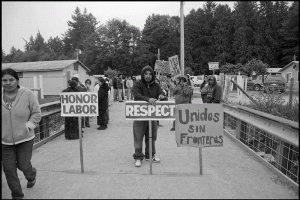Wendell Berry’s Right Kind of Farming
The New York Times
 Hiring migrant farm labor is very profitable for big agribusiness. Last year workers walked out of the fields at Sakuma Brothers Farms in Washington - one of the largest berry growers in the state. Berries are big business, with annual sales of $6.1 million, and big corporate customers like Häagen Dazs ice cream. Here is their story.
Hiring migrant farm labor is very profitable for big agribusiness. Last year workers walked out of the fields at Sakuma Brothers Farms in Washington - one of the largest berry growers in the state. Berries are big business, with annual sales of $6.1 million, and big corporate customers like Häagen Dazs ice cream. Here is their story.
Spread the word